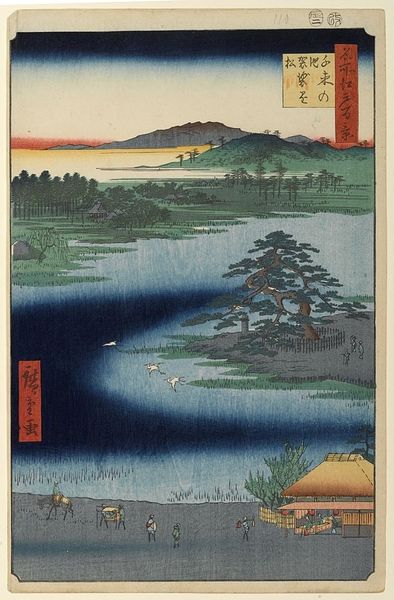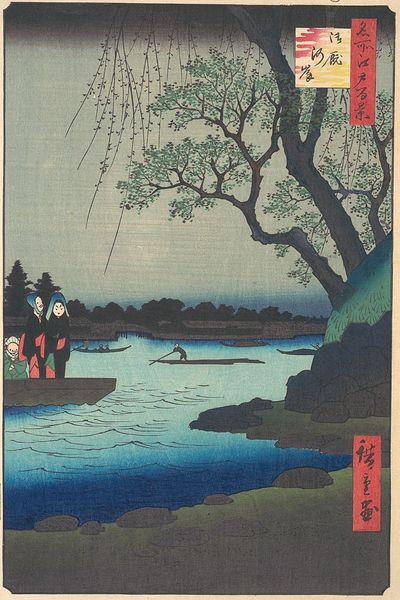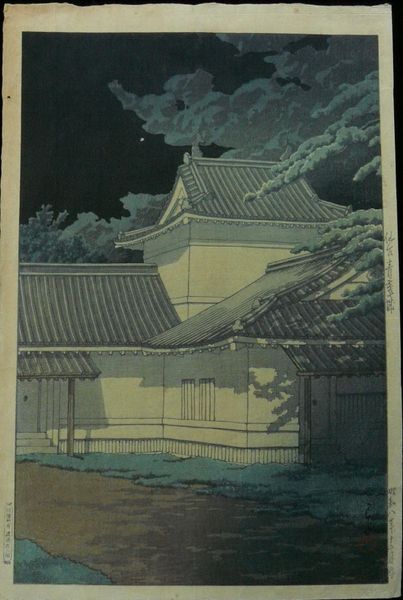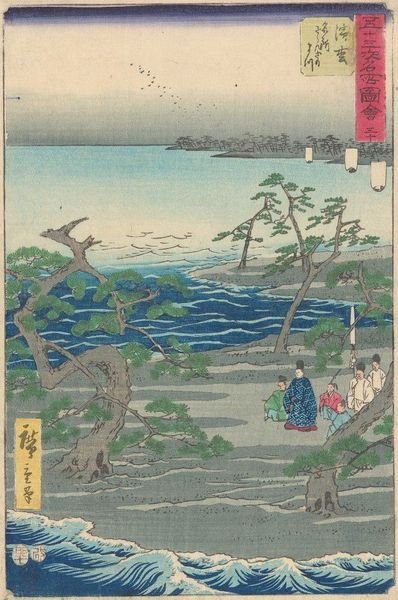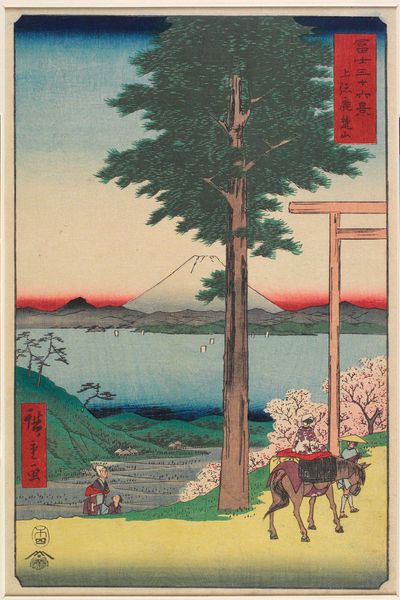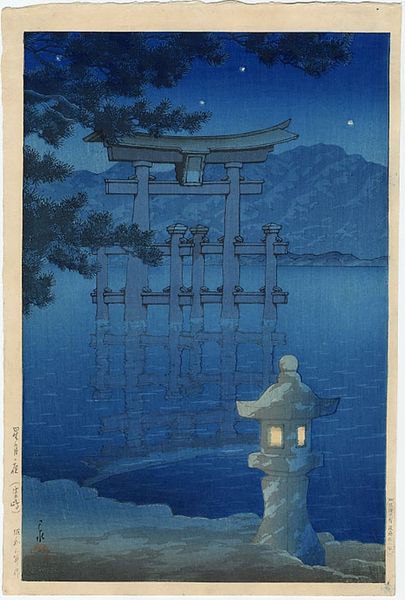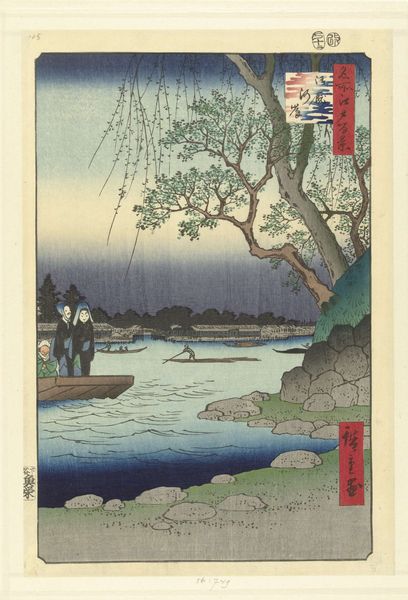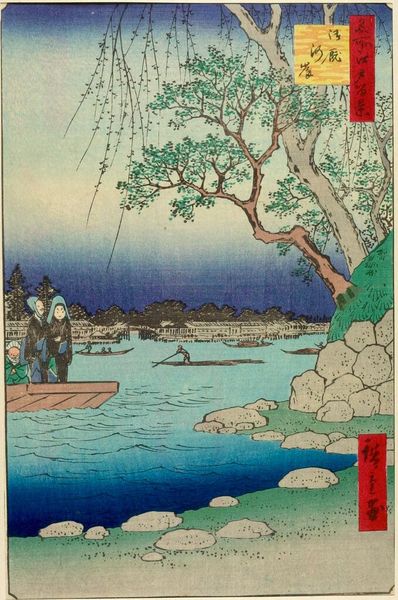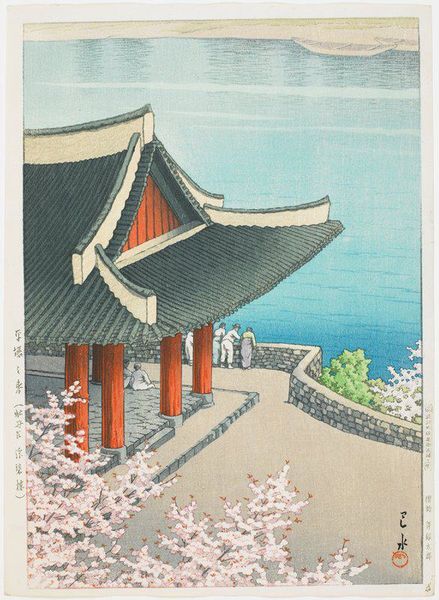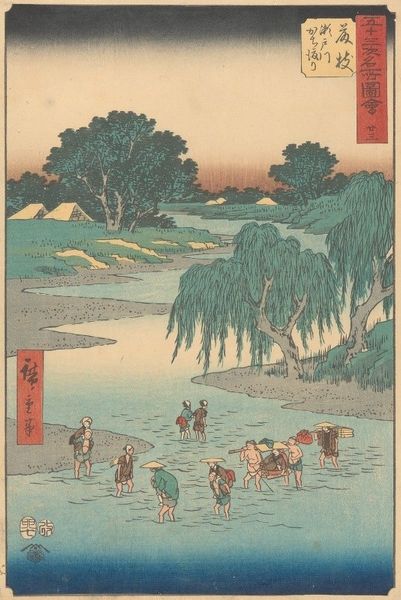
Dimensions: 13 15/16 × 9 1/8 in. (35.4 × 23.18 cm) (sight)23 × 19 × 1 1/2 in. (58.42 × 48.26 × 3.81 cm) (outer frame)
Copyright: No Copyright - United States
Editor: This is Hasui Kawase's "Kiyozumi Garden in Moonlight," a woodblock print from 1938. It’s so serene; the colors are muted and the composition is very balanced. How do you interpret this work, thinking about its historical and social context? Curator: Ukiyo-e prints like this were originally mass-produced and relatively inexpensive, often depicting scenes of everyday life and landscapes. But by the early 20th century, their popularity had declined. Prints like Hasui's represent a conscious revival of this tradition, specifically aimed at a middle-class audience that had both the leisure time and the money to consume these images. What do you think that says about the perceived value of art during that period? Editor: I guess it shows a desire to connect with traditional Japanese culture during a time of rapid modernization. Were these images also circulated internationally? Curator: Exactly! The revival of Ukiyo-e was fueled, in part, by Western interest in Japanese art. This print would likely have been marketed as an authentic piece of Japanese culture, promoting a specific image of Japan to both domestic and international audiences. Consider the way the lantern and the carefully manicured garden reinforce ideas of tranquility and traditional aesthetics. Does this strike you as entirely genuine or perhaps somewhat staged for an outside perspective? Editor: It’s interesting you point that out. Seeing it through that lens, it seems almost like a carefully constructed postcard of "old Japan," designed to appeal to certain expectations. Curator: Precisely. And recognizing that layer of constructed imagery helps us understand the role of art in shaping national identity and cultural tourism during that period. Editor: This has really opened my eyes. I’ll never look at Ukiyo-e the same way again. Curator: And I now better appreciate the role the print played in a cultural landscape during a complex historical period.
Comments
No comments
Be the first to comment and join the conversation on the ultimate creative platform.
